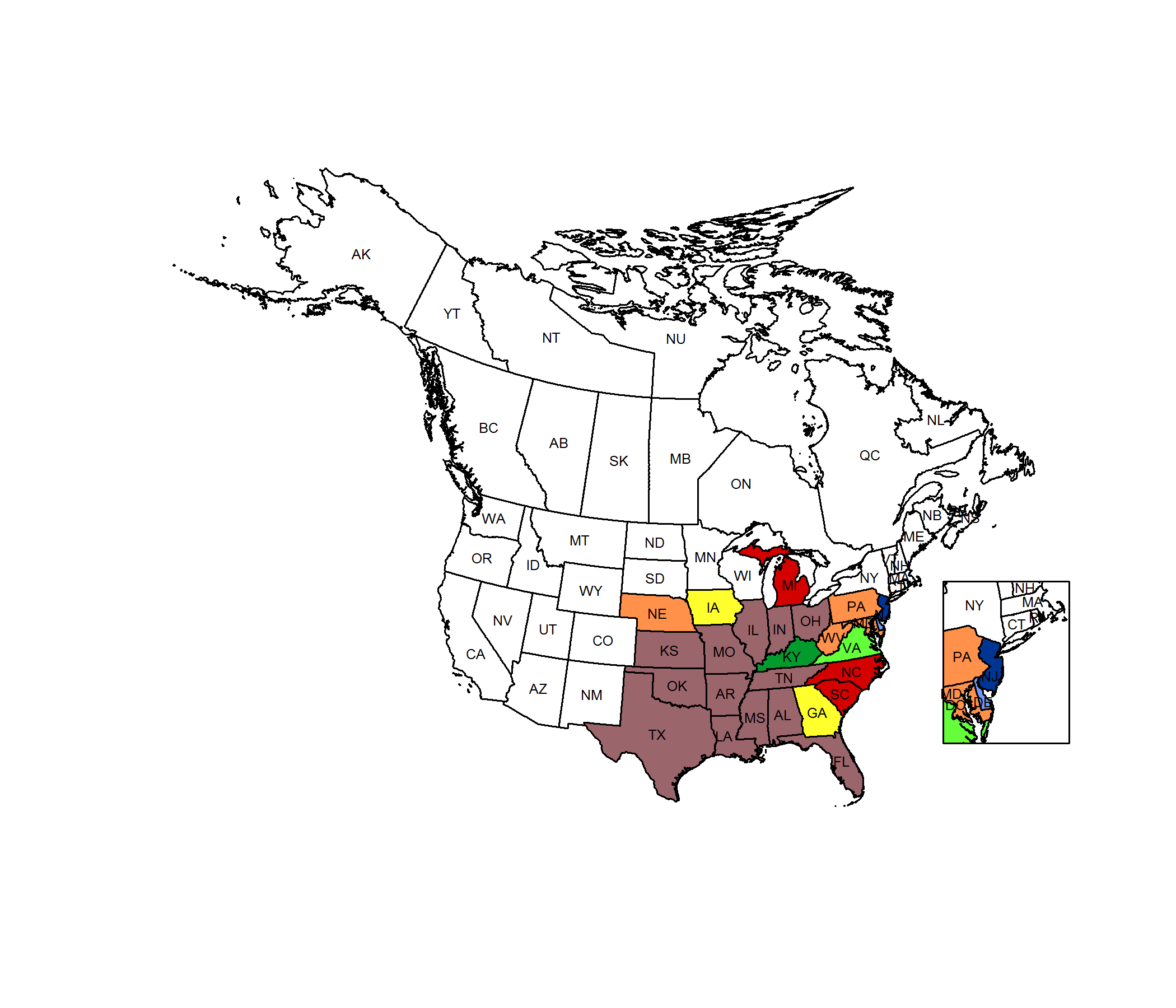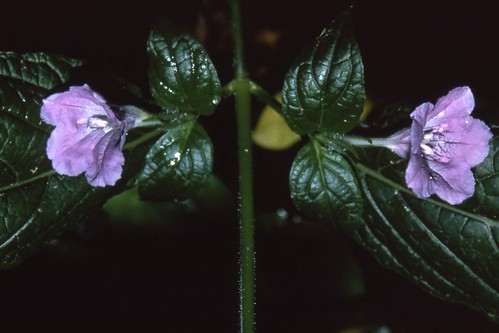 Species Factsheets
Species Factsheets
Ruellia strepens
Limestone Petunia
State Status: Pennsylvania Threatened (PT)
PBS Status: Pennsylvania Threatened (PT)
Federal Status:
Global Rank: G4G5
![]() rank interpretation
rank interpretation
State Rank: S2
Did You Know?
Many species within this family produce two kinds of flowers - those that have open flowers, which can be pollinated by insects, and those that don't open, which must self-pollinate.
Description
Limestone petunia (Ruellia strepens) is a perennial herb with hairy-lined stems that can reach 1m in height. The leaves are oppositely arranged, oval to lance-shaped, variable on the margin and in hairiness, and up to 15cm long and 6cm wide. The flowers, appearing from late June through late July, occur singly or in small clusters in the leaf axils. The blue to purple petals are 3-5cm long, with a tube-like base and five spreading lobes above. The fruit is a hairless capsule with many seeds.
Rank Justification
Imperiled in the nation or state because of rarity due to very restricted range, very few populations (often 20 or fewer), steep declines, or other factors making it very vulnerable to extirpation from the nation or state.
PABS
The PA Biological Survey (PABS) considers limestone petunia to be a species of special concern, based on the relatively few occurrences that have been recently confirmed. It has a PA legal rarity status and a PABS suggested rarity status of Threatened. About thirty-five populations are currently known from the state.
Habitat
It grows on wooded hillsides, floodplains, and streambanks, especially on calcareous substrates.
Survey Dates
Flowers late June - late July
Distribution

Threats
Invasive species and quarrying represent threats at some locations.
Management
The viability of populations of limestone petunia and its habitat can be enhanced by maintaining forested conditions on floodplains and streambanks.
Conservation Status Map

NatureServe. 2017. NatureServe Explorer: An online encyclopedia of life [web application]. Version 7.1. NatureServe, Arlington, Virginia. Available https://explorer.natureserve.org.
https://nature.mdc.mo.gov/discover-nature/field-guide/wild-petunia-smooth-ruellia
- NatureServe. 2018. NatureServe Explorer: An online encyclopedia of life [web application]. Version 7.1. NatureServe, Arlington, Virginia. Available at https://www.natureserve.org/explorer
- Pennsylvania Natural Heritage Program. 2018.
- Rhoads, A.F. and W.M. Klein, Jr. 1993. The Vascular Flora of Pennsylvania. American Philosophical Society, Philadelphia, Pennsylvania. Rhoads, A.F. and T.A. Block.
- 2007. The Plants of Pennsylvania: An Illustrated Manual. 2nd edition. University of Pennsylvania Press, Philadelphia, Pennsylvania.







